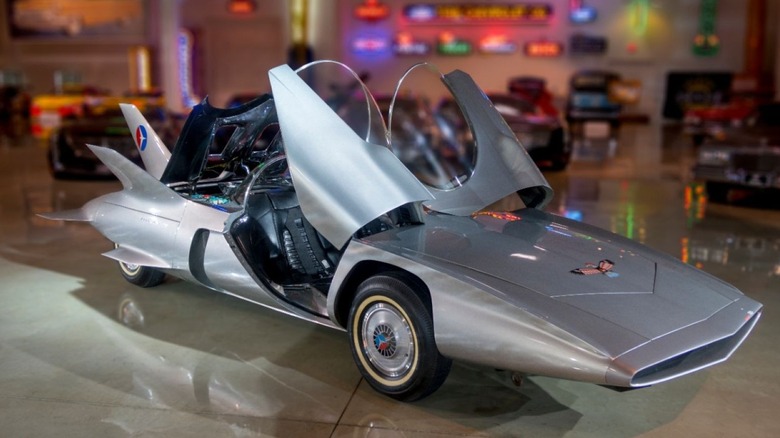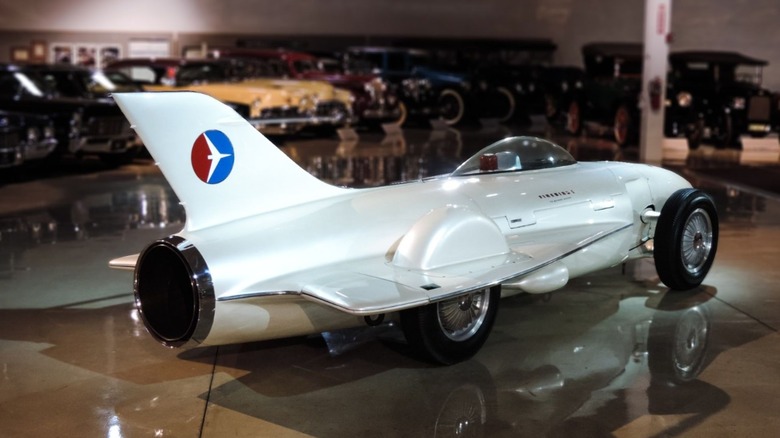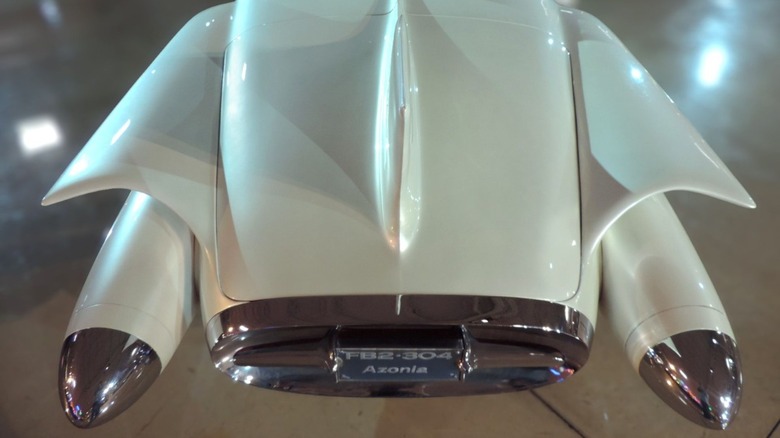The notion of putting jet engines in cars in one that won’t go away. For literally decades, major automakers have played around with the concept. Most recently, Elon Musk teased that the long-awaited update to the Tesla Roadster might feature some rocket tech borrowed from SpaceX. Infatuated with aeronautical advancements, automakers designed jet cars from the 1940s through the presidential administration of Ronald Reagan. But despite their obvious enthusiasm for the technology, they consistently abandoned the dream.
And for good reason, as General Motors noted in a rundown of the company’s many attempts to commercialize turbine engines, bringing them out of the skies and onto the roads. We’ve been here before, scoping out supercool photos of the Firebird I, II, and III concepts, developed under the supervision of GM design legend Harley Earl. The concepts ended up in museums, not driveways. These days, with the possible exception of diehard Aptera fans, there isn’t much enthusiasm for 1950s-style cars that look like fighter planes. There’s also the non-trivial factor that, from an engineering point of view, turbine engines have always been a pretty bad idea. And don’t even think about the pollution.
Disadvantages outweigh the advantages
As GM News pointed out, turbine engines can run on a wide range of fuels: “propane, kerosene, aviation fuel, landfill gas, ammonia, basically anything combustible.” The article also acknowledges that competitor and fellow turbine-experimenter Chrysler developed a concept that “ran on tequila.” Turbines also had some other positives for GM. The power the engines produce is turned into rotational energy, just like a traditional piston-driven motor. But turbine drivetrains are much simpler than their combustion counterparts. They were sort of like the electric cars of the Eisenhower years.
Unlike electric cars, what they turbines aren’t great at is emissions. That’s probably not a huge shock. GM’s overarching motivation for pursuing turbine technology was to hedge against collapsing oil reserves, back in the years before emissions were a dominant concern. A bigger worry was pumping all the petroleum out of the ground and being left with nothing to fill up gas tanks. The company even looked at powering vehicles with coal dust because it was so plentiful in America. But in the end, manufacturing turbines proved too difficult, and as “peak oil” worries retreated, turbines lost relevance. They weren’t exactly a sideline, though: GM created the fanciful, futuristic Firebirds, but the company also rolled out turbine concepts for buses and heavy trucks.
When technology and design worked together
You can’t survey the history of GM’s turbine vehicles without noticing how extroverted their designs are. Because the Firebirds were effectively powered by jet engines, they were designed to look like jets. Even the Turbocruiser buses and Bison trucks featured slick, aerodynamic lines and exotic silhouettes. The styling telegraphed the means of propulsion. Little kids were supposed to be utterly wowed and filled with optimism for the future when these things drove by.
The actual future meant EVs, most of which don’t depart from traditional car design. Consumers are more concerned about software, infotainment, connectedness, and at the extremes, whether the cars can drive themselves. The tech is far more introverted. So ultimately, the history of turbine vehicles from the 1950s to 1980s is an artifact of the post-war world. Automakers took the technology seriously and, with design, tried to sell it. But the exceptional cool factor could never overcome the practical limitations.
We’re at the point now where this unusual automotive preoccupation has been consigned to the past. Hybrids and EVs are the name of the game, powertrain-wise, with hydrogen kind of hanging in there as the exotic option over the horizon. The photos of GM’s jet cars are always going to fun to look at, however. And who knows? Maybe they’ll inspire young designers to think outside the box with 21st-century car concepts. And some of that old-school extroversion will stage a comeback.




